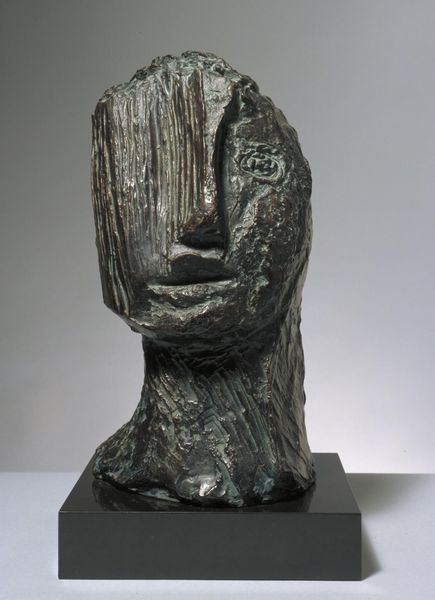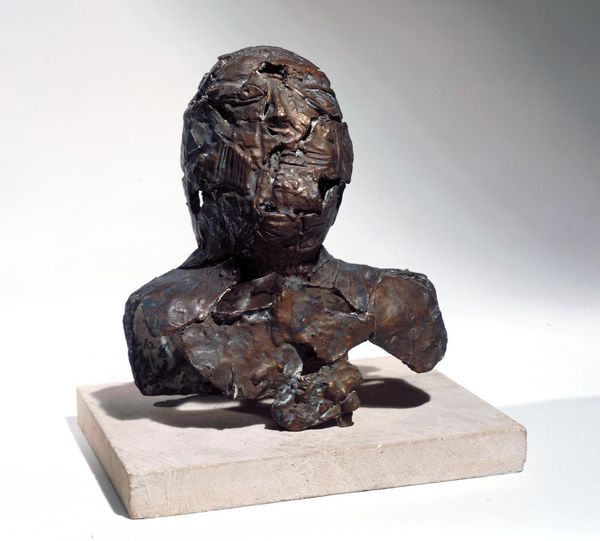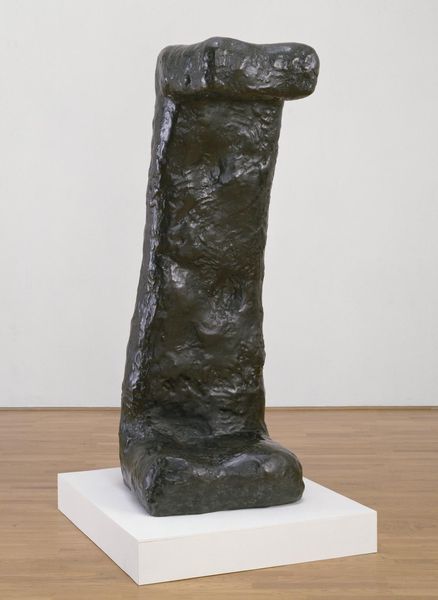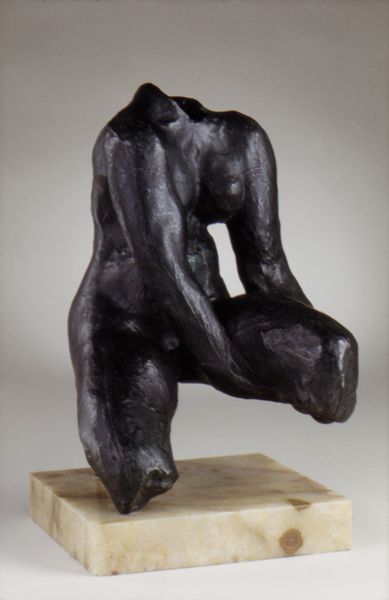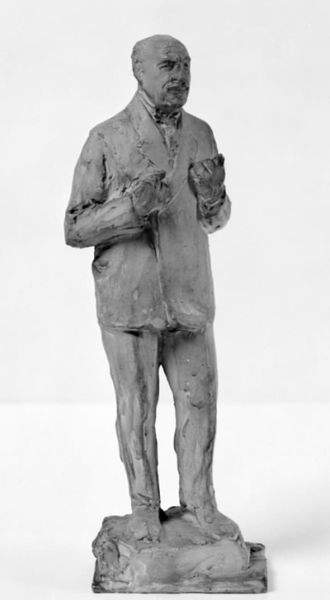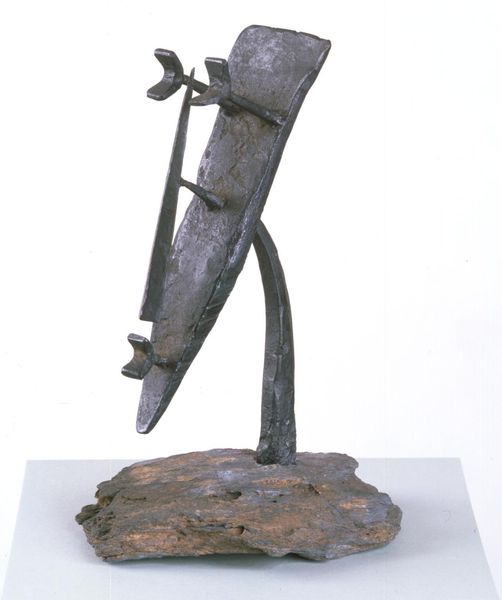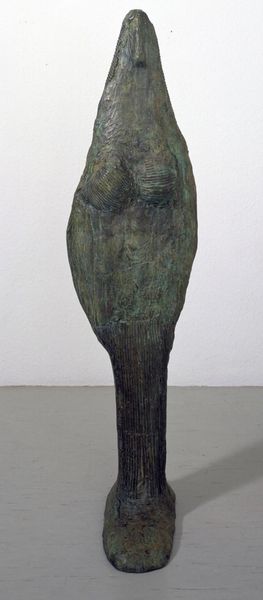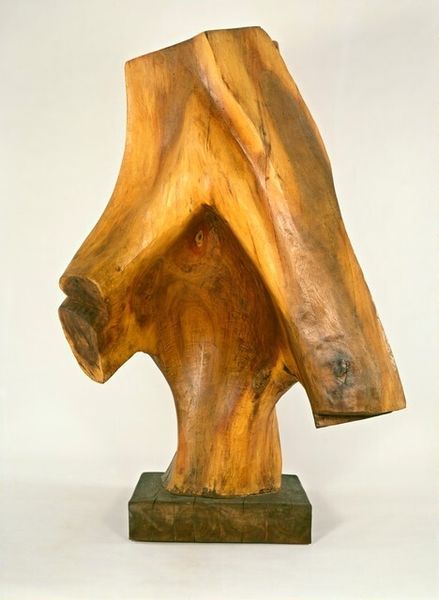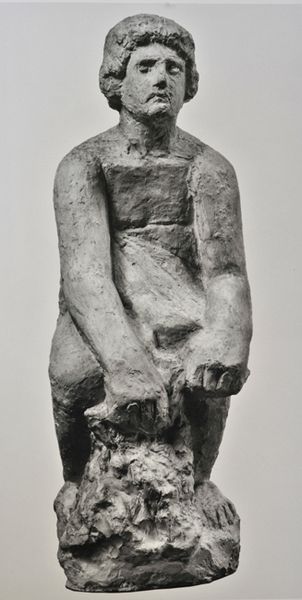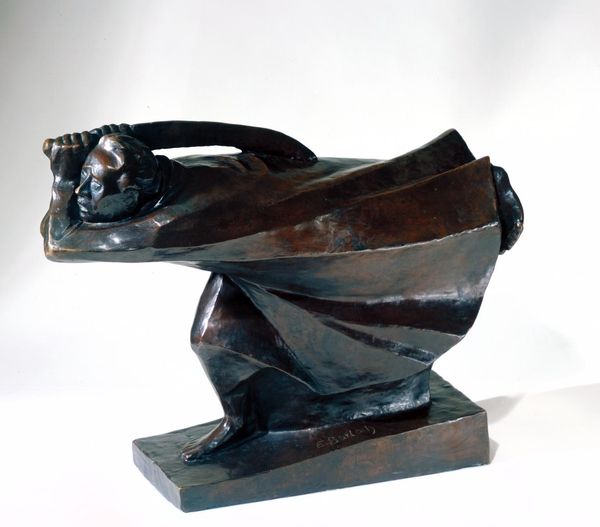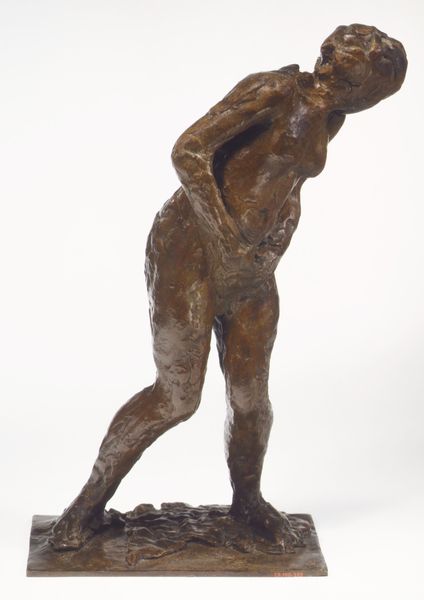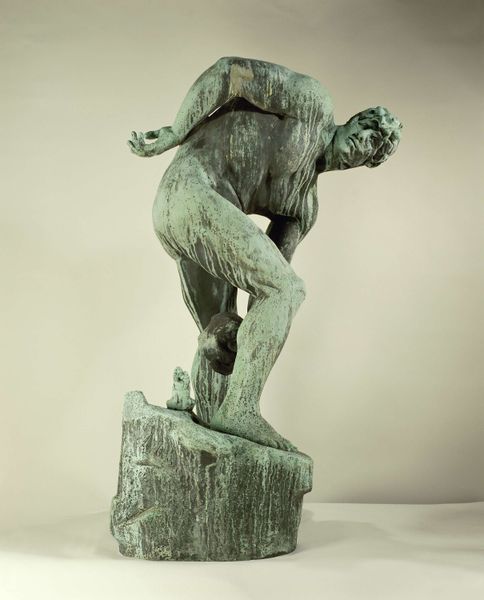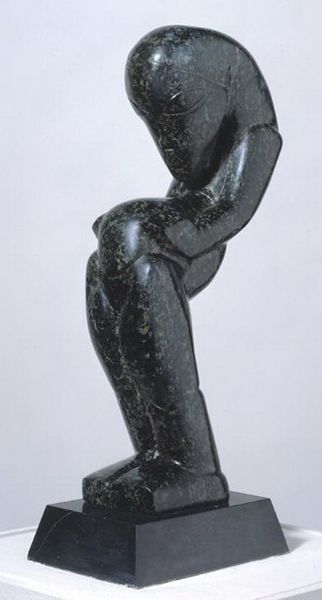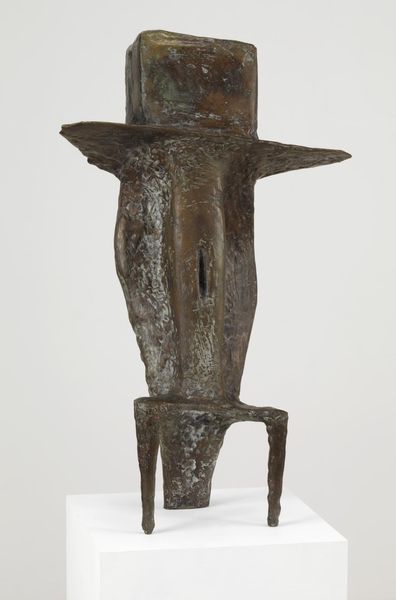
Dimensions: object: 1130 x 718 x 270 mm
Copyright: © William Turnbull. All Rights Reserved, DACS 2014 | CC-BY-NC-ND 4.0 DEED, Photo: Tate
Curator: William Turnbull's sculpture, titled Horse, presents a compelling study in form. Editor: It strikes me as profoundly earthy, almost excavated, with the rough texture of the bronze and the stacked base. Curator: The vertical striations on the bronze create a sense of contained energy. Note how the arching form defies gravity, leading the eye upward. Editor: And consider the labor involved in creating these textures, the artist’s hand present in every groove, elevating the material itself. Curator: Indeed, the artist employs a powerful reduction of the subject. The essence of the horse, not its literal representation. Editor: For me, it’s also about the industrial processes, the casting. Turnbull isn't just shaping; he's manipulating industry to redefine sculpture. Curator: A fascinating intersection of modernism and something almost archaic, wouldn't you agree? Editor: Absolutely. A testament to the transformative power inherent in both material and method.
Comments
Join the conversation
Join millions of artists and users on Artera today and experience the ultimate creative platform.
tate 6 months ago
⋮
In 1946 William Turnbull, while a student at the Slade School of Art, made his first known sculpture of a horse's head. It was painted bright yellow and consisted primarily of two intersecting planes, one of which was punctured by two holes that served as eyes. Eight years later he made Horse, an unpainted work. Along with Pegasus (private collection), which was made earlier in 1954, Horse is one of William Turnbull's first sculptures in which separate sections made from different materials are stacked on top of one another in a manner reminiscent of Constantin Brancusi's (1876-1957) work. Turnbull had visited Brancusi's studio while living in Paris between 1948 and 1950 and has acknowledged the importance of this encounter with a form of sculpture quite different to the Neo-Romantic tradition he had known in England. Horse itself is comprised of a cube of rough-hewn stone that stands directly on the floor; a smooth, rectangular block of rosewood; and an arch of striated bronze, shaped to resemble a horse's head and neck.
